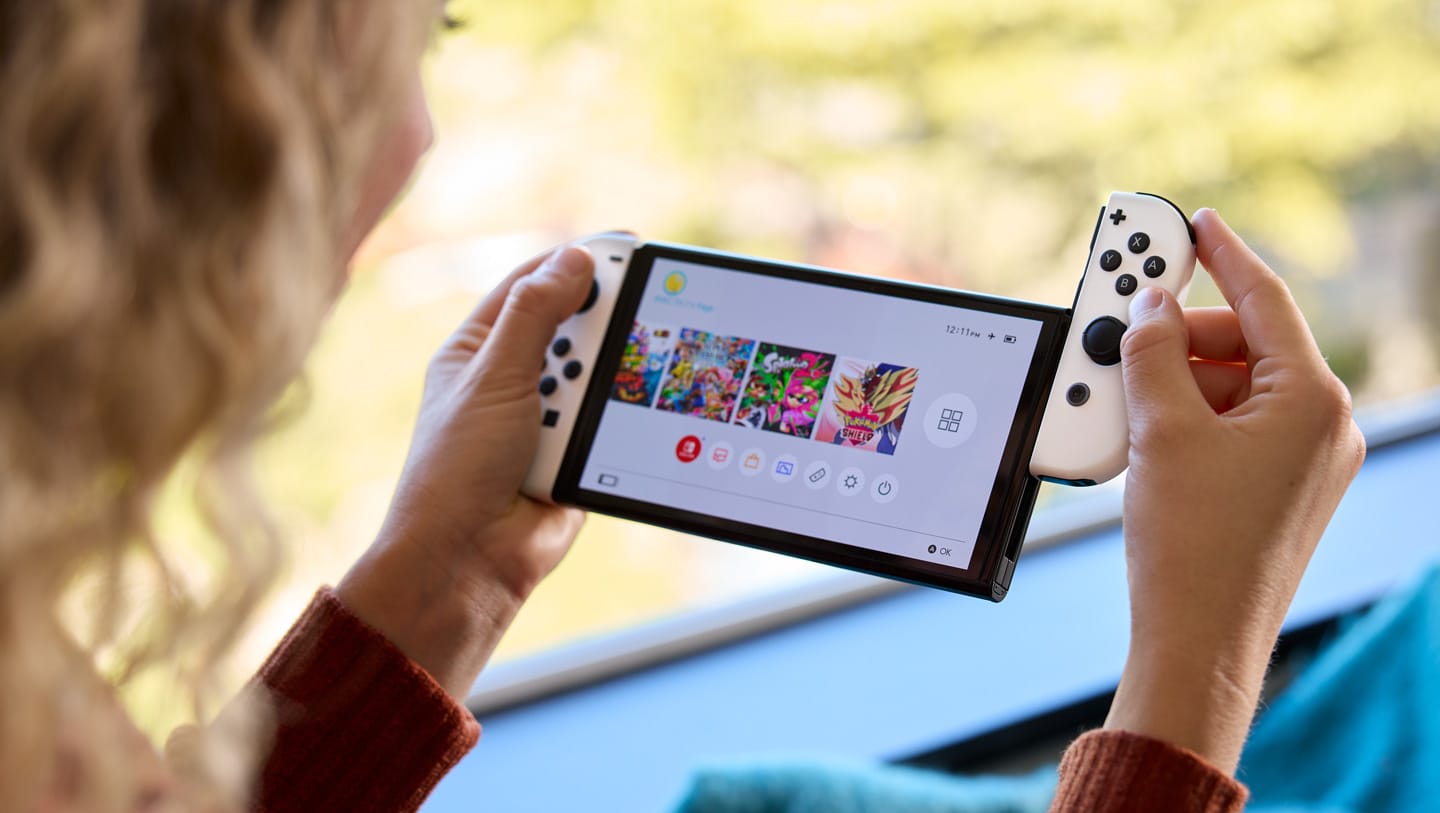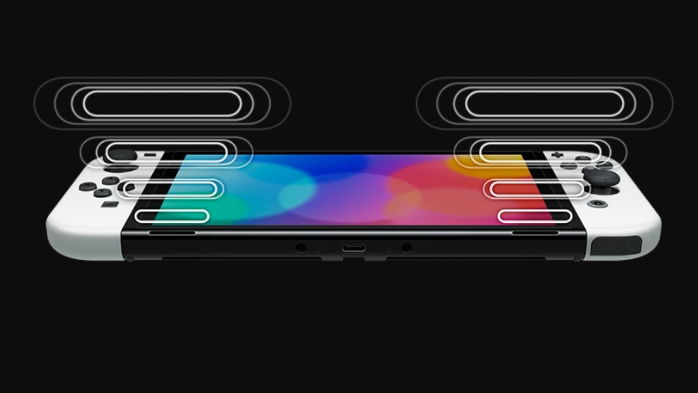
Nintendo has, entirely out of the blue, decided that it’s time for a new version of the Switch. The Nintendo Switch OLED will have an upgraded screen, which will be a big improvement over the fairly weak display in the original Switch. There are other improved features too, that evolve the console and make it even better than the original, which is impressive given how great the Switch has always been.
- Nintendo Switch OLED pre-orders: where to buy the new Nintendo Switch
Nintendo Switch vs. Nintendo Switch OLED – screen
There is no improvement to the resolution of the new Switch’s built-in screen. It still offers 1280x720 resolution, which is a measure to preserve battery life when being handheld, and to keep heat down. When the Switch OLED is connected to the mains, and your TV, it can output 1080p video as before.
The switch (yes, pun intended) from LCD to OLED is a big deal though. These screens can offer improved battery performance because the pixels are self-illuminating. That means there’s no backlight, which means power is only used when a pixel is lit, meaning games with areas of black won’t consume as much power.
The colour reproduction could also be much better. OLEDs are known for offering incredible colour reproduction and can certainly do justice to games. Nintendo’s first-party games will no doubt look excellent. Mario’s bright colours are an ideal match for this display tech.

Nintendo Switch vs. Nintendo Switch OLED – Battery life
Here’s where things get interesting. Well, even more interesting. The new Switch OLED will have the same size battery as the original Switch. It’s a 4310mAh pack, however because of efficiency (largely due to the display) you’ll now see between 4.5 and 9 hours play time, depending on the game. The original manages around 2.5 to 6.5 hours on a charge. Some of the newer original Switch consoles have improved battery life too, so the difference you see will depend on how old your console is.
And speaking of charges, it will still take three hours to fully charge your Switch OLED. That’s the same as the original.
Nintendo Switch vs. Nintendo Switch OLED – Sound
The new Nintendo Switch OLED will feature what Nintendo says is “enhanced audio”. Will it be better than the original? We’d hope so, but it’s still just producing stereo sound and through fairly small speakers, don’t expect any Dolby Atmos here.
Get all the latest news, reviews, deals and buying guides on gorgeous tech, home and active products from the T3 experts

Nintendo Switch vs. Nintendo Switch OLED – Processor
The Switch is still powered by the Nvidia Tegra custom processor. It’s hard to tell if this is the same chip found in the most recent Switch models. Nvidia is, reportedly, ending production of the Tegra Mariko which powers the hardware, but it’s entirely possible Nintendo has ordered enough of them to see production through. Rumours, of course, persist that the Switch Pro will arrive at some point with the ability to run games at 4K resolutions.
Nintendo Switch vs. Nintendo Switch OLED – Internal storage
The original Switch has storage of 32GB, the OLED Switch will have 64GB of internal storage, and will support microSD cards up to 2TB as long as they’re fast (SDHC or SDXC).

Nintendo Switch vs. Nintendo Switch OLED – Wi-Fi and multiplayer
One big surprise is that the new Switch OLED will also feature an Ethernet jack. This means you’ll no longer need to have the device connected to Wi-Fi to play on your TV. This is helpful to those enjoying multiplayer shooters, or games where low latency is needed, because wireless networks are rarely as snappy as wired ones.
The Ethernet jack on the Switch OLED’s new dock will require you get a cable, if you somehow don’t already have one, and it’s not yet clear what speed it will operate at, but it’s fairly safe to assume that gigabit speeds are entirely possible.
Nintendo Switch vs. Nintendo Switch OLED – output and ports
The Nintendo Switch OLED will feature a slightly different setup for its USB ports. There are now only two on the side and they’re still only USB 2.0. The previous Nintendo Switch has a rear-mounted USB connector, and it appears this has now gone.
The new Switch docking station is compatible with the original switch, and vice-versa.

Nintendo Switch vs. Nintendo Switch OLED – stand
The kickstand on the new Switch OLED now spans the entire rear of the console. This is a massive improvement over the original model, with its weedy little leg that had the structural integrity of a damp towel. This bodes well for tabletop play and perhaps even balancing on your legs play. It's also adjustable, which is frankly superb news.
- Check for Nintendo Switch OLED pre-orders at Amazon right now
- Take a look at our Nintendo discount codes for the latest offers from the retailer
Ian has been involved in technology journalism since 2007, originally writing about AV hardware back when LCDs and plasma TVs were just gaining popularity. Nearly 15 years on, he remains as excited about how tech can make your life better.